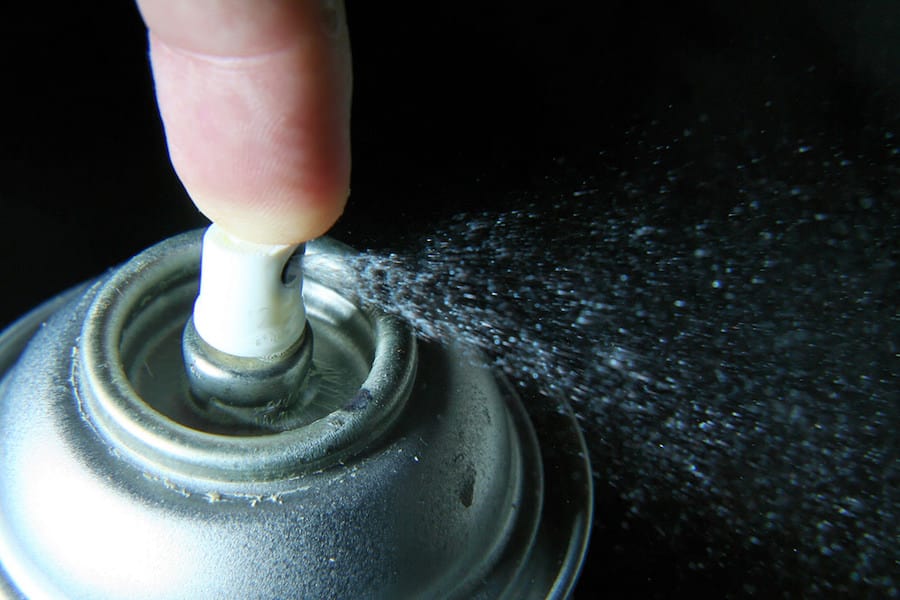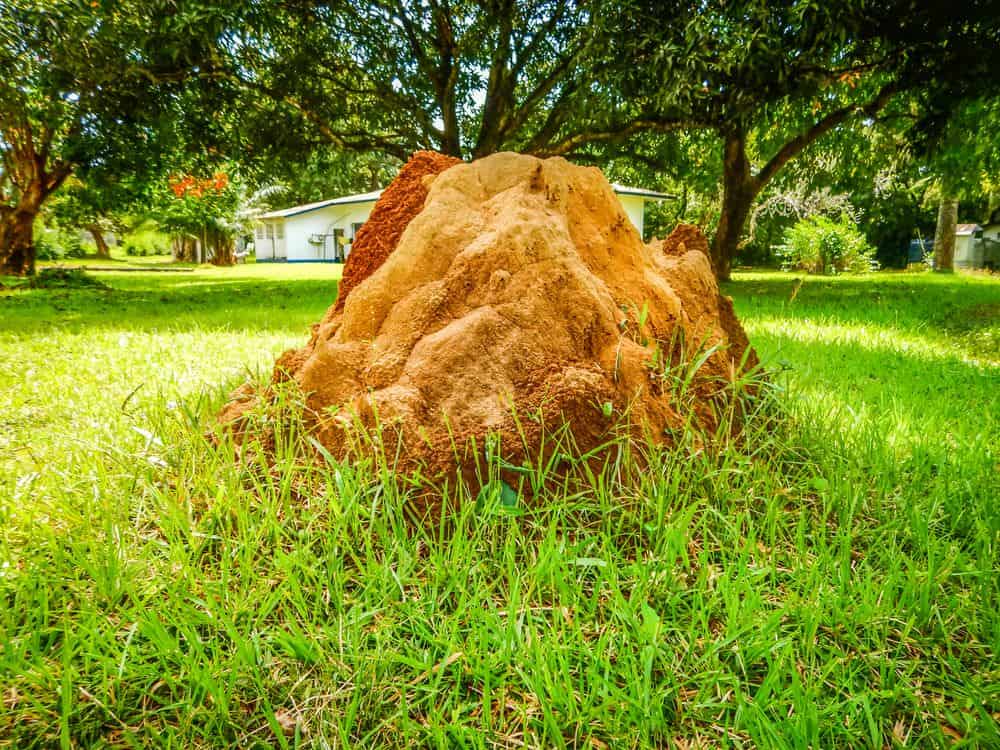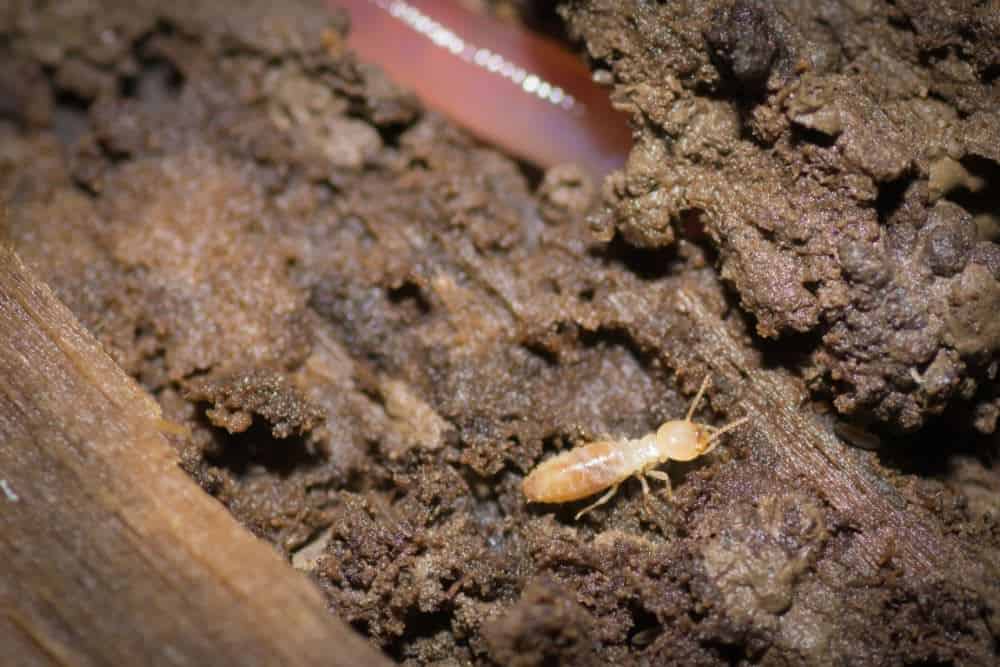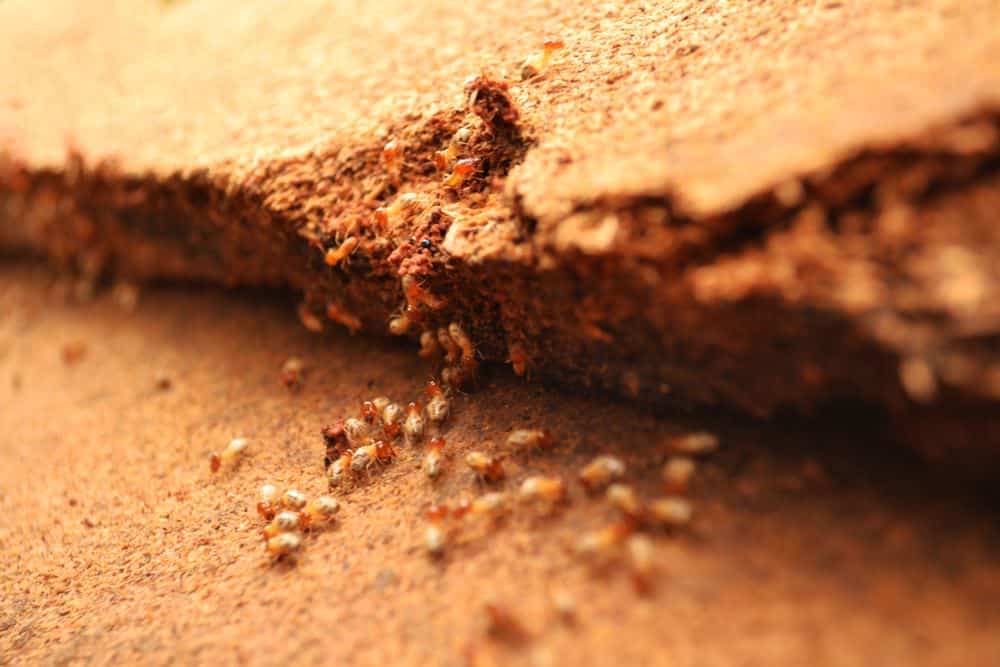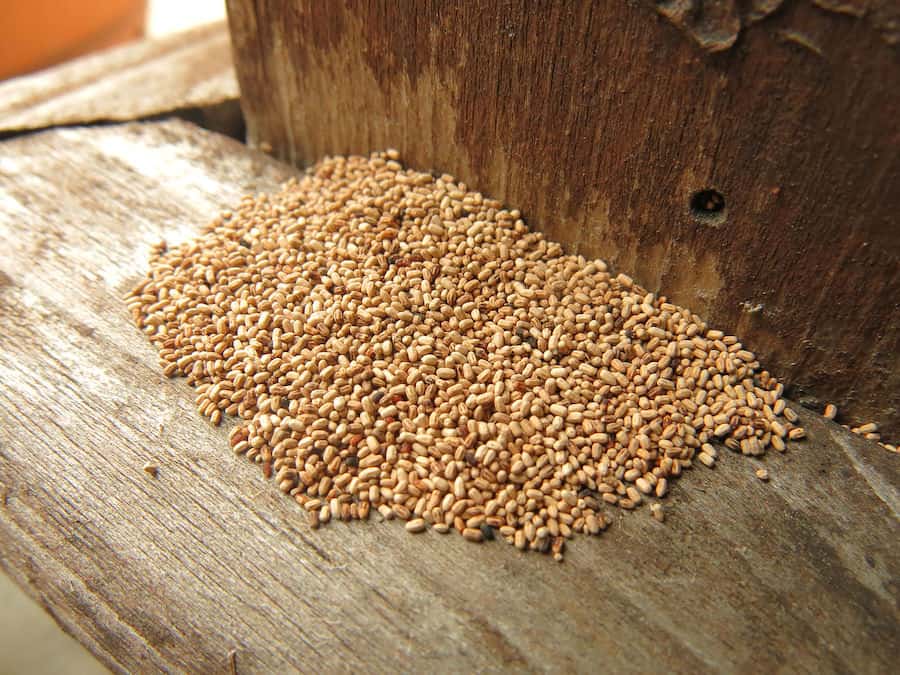Queen Termites: Role, Behaviour & Appearance
A termite queen is probably the most important member of the termite colony. What do termite queens look like and how long do they live for? Read on to find out.
I will cover the reproductive habits of termite queen and her role in the colony. Finally, I will detail how you can find and kill termite queens.
What Are Termite Queens?
Along with the termite king, a termite queen is the highest ranking member of termite society. Termites are social insects that live in colonies, similar to ants.
What Is a Termite Colony?
In the termite world, there are different sectors (or castes) of society. Each caste has a specific purpose in the colony, to help it survive and thrive.
The majority of termite colonies can be divided into three groups. The termite king and queen are fertile adults. This couple is responsible for the founding and progress of the colony. They fall within the reproductive caste.
The other two types of termites are workers and soldiers. Workers perform tasks such as gathering resources and keeping the nest clean. They are the most populous group in the colony.
Workers also care for the king, queen, and soldiers. A small portion of workers may develop reproductive capabilities or molt (evolve) into soldiers.
Soldiers are larger than workers, and fewer in number. They are the defenders of the termite colony. Depending on the species, they either have large jaws or the ability to spray chemicals in defense.
As a termite colony grows and matures, a fourth caste is produced—reproductives. Reproductives either remain in the colony or leave it. The latter category of reproductives, known as alates, have functional wings. They will leave the nest to mate and begin new colonies.
As with kings, termite queens begin their lives as alates. During this time, the future king follows her. Once a suitable location is found, the pair will mate, becoming king and queen. After this first union, the queen lays eggs and new colony members are produced. This is how a termite colony is founded and a termite queen will not leave her royal chamber after this point.
What Does a Termite Queen Do?
The queen does not care for herself once the colony is formed. As she remains in her chamber with the king, she cannot feed herself, so workers visit the chamber regularly for this task. This is done by passing food mouth to mouth.
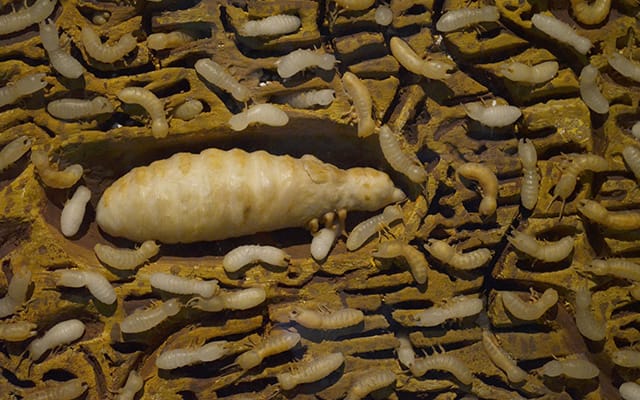
The feeding periods are when the queen learns about the colonies’ activities. Complex chemical messages are transmitted along with food by the worker. In turn, the queen passes her own messages back to the worker in the same manner.
The termite queen plays an important role in regulating the entire colony. She emits pheromones that prevent other females from being able to reproduce. This includes soldiers and workers.
The termite king serves the same purpose, with males instead of females. If the colony is too large, the king and queen’s pheromones can lose potency and other alates may emerge. However, this is not always detrimental as a larger colony must be sustained by greater reproduction rates.
These termites will not compete with the king and queen. Rather, they serve as replacements in the event the king or queen dies. This is to ensure the continued survival of the colony.
What Do Termite Queens Look Like?
Female termite alates are the predecessors to termite queens. Depending on the species, these alates can vary in color and size. Once a termite female becomes a queen, her appearance will change significantly.
Termite alates have long, ridged abdomens and a shorter thorax (upper body). Although they are commonly confused for ants, there are several differences. Termites have straight, rather than elbowed, antennae. They do not have a thin waist, as ants do. Finally, their wings are thicker and with more veins than ant wings.
The Coptotermes genus contains the highest number of termite species. Second to Coptotermes is the genus, Reticulitermes. Female Coptotermes alates are a brownish-yellow color and they can range in size from 0.47 inches to 0.59 inches in length. Their wings are lined with tiny hairs.
The females belonging to the Reticulitermes genus are smaller. They can range in size from 0.28 to 0.39 inches long. These females can range in color from dark brown to golden brown. Their wings have visible veins and are hairless.
Unlike other castes, the termite queen has eyes. At the start of her reign, she resembles any other alate—wingless and slim-bodied. As she begins to lay eggs, however, she grows larger. A lack of movement, as well as almost constant reproduction, contributes to this growth.
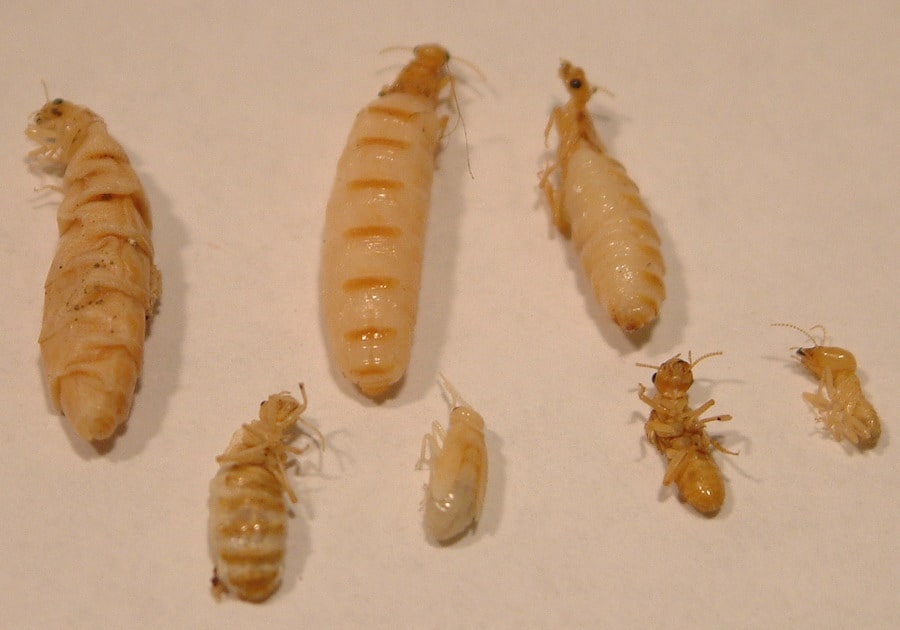
At the same time, the queen’s thorax (upper body) stays the same. The abdomen will usually turn a white or yellowish color as it stretches out. As she matures, her abdomen will become so heavy that movement is nearly impossible.
The queens of certain species can reach up to 4 inches in length, as the abdomen expands. This phenomenon is known as “physogastry.” Eventually, the termite queen will increase in size until she is nearly unrecognizable. Termite queens always dwarf the termite kings considerably.
How Long Do Termite Queens Live For?
The average lifespan of a queen depends on her species. In general, termite queens have exceptionally long lifespans. The queens can stay alive for decades if left undisturbed. For some, this can be up to 70 years.
This is in stark contrast to the average termite from the soldier or worker castes. The lifespan of these non-reproducing termites can be as little as several months.
Termite queens have a unique genetic makeup. This does not occur from birth but develops gradually. All termites are born with the same genetic code but not all termites evolve equally—some will grow to be sterile workers, others reproductives. Unlike other insects that reproduce copiously, reproduction does not shorten a queen’s life.
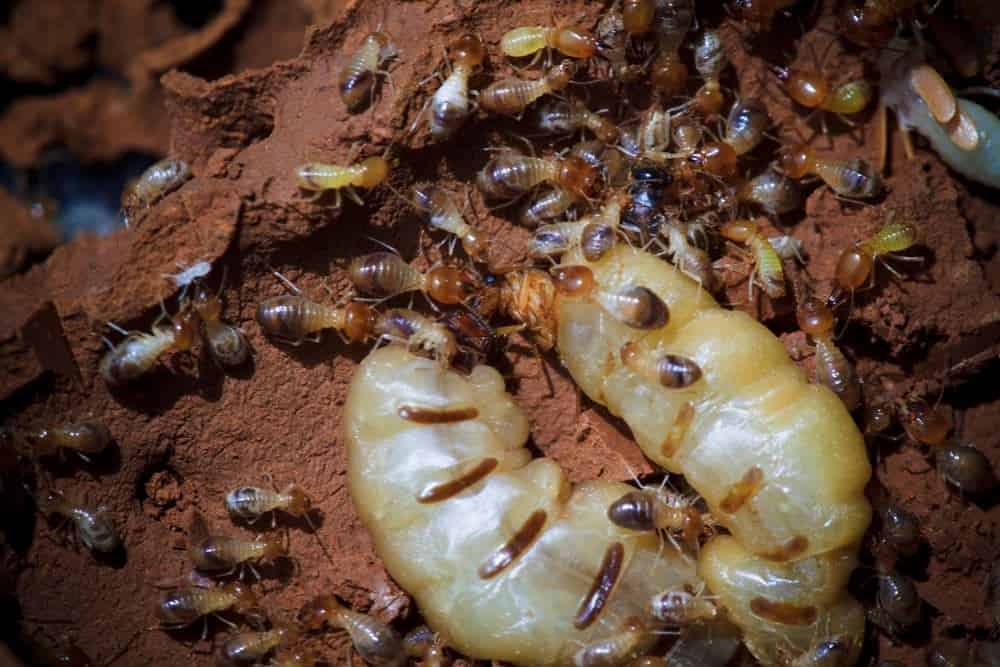
Macrotermes bellicosus is a species of wild termite. The queens have a high reproductive rate, laying up to 20,000 eggs per day to ensure the termite life cycle continues. They were found to have 717 over-expressed genes. Compared to kings with 50 genes and workers from 88 to 150, that is substantial. Gene expression can influence aging and lifespan. Queen termites have a particular gene sequence that prevents them from aging as other termites do.
Queens also live more sheltered lifestyles. They remain protected inside the royal chamber, deep in the colony. Soldiers and workers leave the safety of the nest periodically, to defend it or forage, respectively. In terms of gene expression, lower-caste termites are expendable. The queen termite is far more valuable, hence her distinctive genes.
Termite queens have other intrinsic qualities that encourage a long life. Queens belonging to the Reticulitermes genus have a special antioxidant system. This reduces the natural oxidative damage that can cause aging and death.
Are Queens the Only Termites to Lay Eggs?
In larger termite colonies, the queen is not usually the only female who can breed. Despite being the founder of the entire colony, she is only the sole reproducer when the colony is young. At this early stage, the queen will also care for the first batch of young she hatches.
As the colony grows, the caste system is implemented. Newborn termites either grow to be soldiers or workers. Once the colony has grown in size and matured, reproductives will be produced.
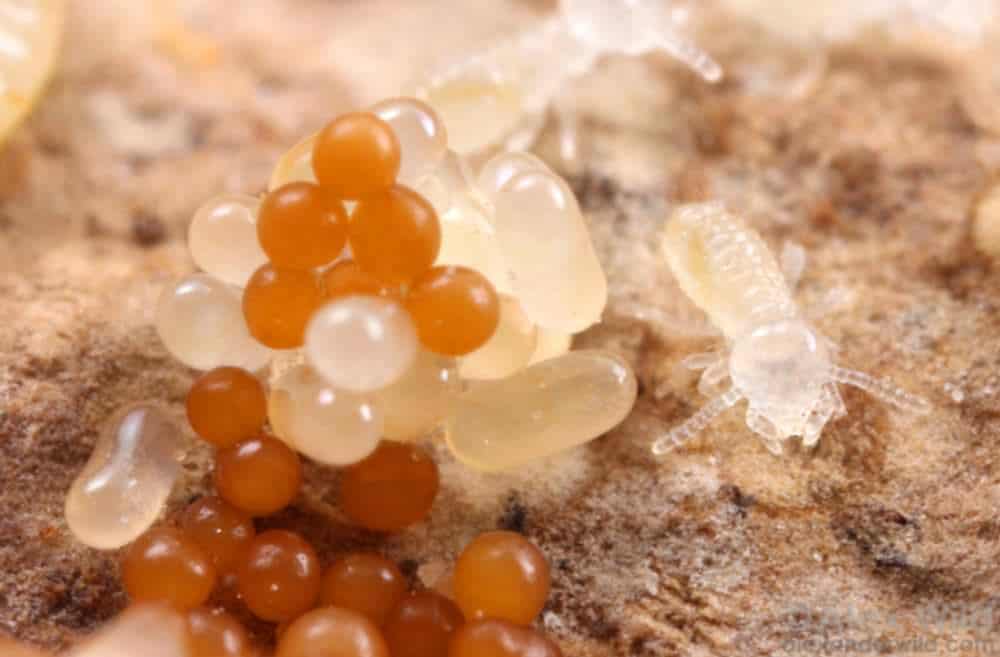
Remember that termite queens begin their lives as reproductives, also known as “alates.” These alates, however, will not remain in their original colony. They are future termite kings and queens, leaving the nest to found their own colonies. These alates—as well as the existing king and queen—are primary reproductives.
In every termite colony, there are also secondary reproductives. Unlike the alates, who leave the nest, secondary reproductives do not have wings and they remain in the colony. They do not have defense mechanisms like the soldiers, but they are larger than workers.
Female secondary reproductives only become capable of reproduction in one of two scenarios. This is either when the queen dies or if the colony grows large. Should the queen die, she will stop emitting her pheromones. Without these pheromones, formerly sterile secondary reproductives will become fertile.
If the colony is mature (older than several years), secondary reproductives can develop, in order to encourage the growth of the colony. These reproductives establish remote nests that may be far from the original nest. This increases the foraging territory of the entire colony.
Secondary reproductives do not have the same reproductive capacity as queens. However, as there can be hundreds of them, they can still help to grow the termite population.
How Many Eggs Do Termite Queens Lay?
Species and age determine how many eggs a termite queen can lay. A termite queen’s first batch of eggs is typically small. As the queen matures, her egg-laying capacity will increase.
The first batches of eggs produced by the queen are larger in size. The more eggs the queen lays as time progresses, the smaller they become. As I covered earlier, termite queens grow in size as they age. Their abdomens distend over time, allowing them to carry more and more eggs.
The queen’s abdomen is not the only thing that grows. Her ovaries will also develop, further enhancing her reproductive abilities. With some types of termites, mature queens can produce over 30,000 eggs per day.
Mature colonies can number in the hundreds of thousands, if not millions. If secondary reproductives appear, each one can increase the population by several hundred eggs.
Climate also impacts egg production. During the winter months, queens lay fewer eggs or may stop reproducing entirely. This does not happen in regions that are warm throughout the year.
How to Find and Kill Termite Queens
There are three broad classifications of termite. These include drywood, dampwood, and subterranean. The location of the queen and the nest is different for each.
Drywood termites must nest inside the wood they feed off. They infiltrate wooden structures and expand the nest from within them. Due to this habit, drywood termites can cause severe damage if they are not dealt with effectively.
Subterranean termites need to build a nest in soil. They enter wooden structures from foundations, as they need soil moisture to live. These termites are less invasive than drywood termites as they must return to their underground nests.
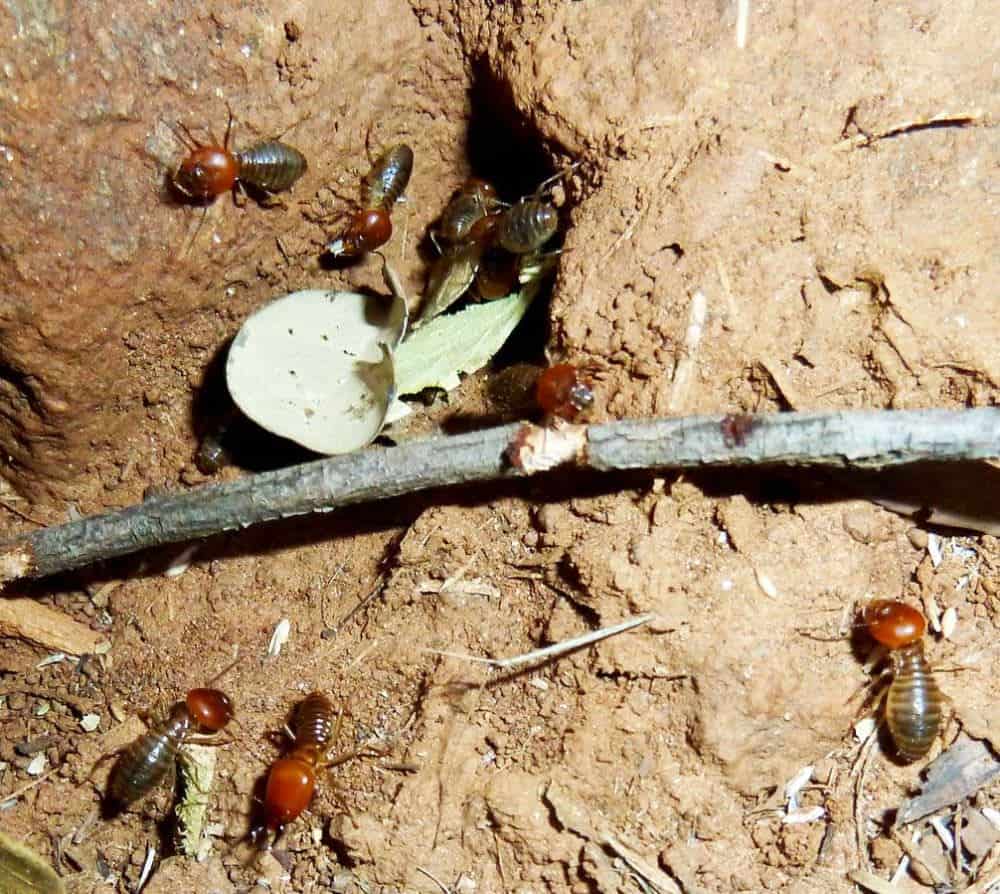
Dampwood termites live in wood that is wet. As with drywood termites, they feed off the same wood they build their nests in. Decaying or water-damaged wood is where they can usually be found.
You are unlikely to see a queen, as her chamber will be deep inside the nest. Sightings of lower caste termites are also rare, unless an infestation is severe. This is because termites move through tunnels in the nest. The only time you may spot termites is when the alates depart the nest and swarm.
As with any pest infestation, an integrated approach is best. It is important to find out how the termites entered your home in the first place. The next step is ensuring that they cannot return. This involves sealing off vulnerabilities, such as cracks in the foundations.
You can purchase chemical barriers to apply on the soil to prevent subterranean termites from returning. If possible, replace damaged wood with wood infused with an insecticide. This can either repel termites or kill them if they attempt to consume the wood.
With termite infestations, it is always preferable to contact a pest control company, as some methods of exterminating termites can only be used by a professional. For example, fumigation, heat, and cooling treatments are best left to the experts.
These involve using devices and insecticides that can be dangerous if mishandled. You will have to leave your home for a period of time, possibly several days, while they are used.
Summary
There is no doubt that termite queens are formidable creatures. These insects can live for many years, are well-protected and reproduce rapidly.
Unfortunately, killing a termite queen alone will not destroy the colony. Unless the queen is very young, hundreds or thousands of termites will survive her. Killing off the entire colony is necessary to stop a termite infestation.

